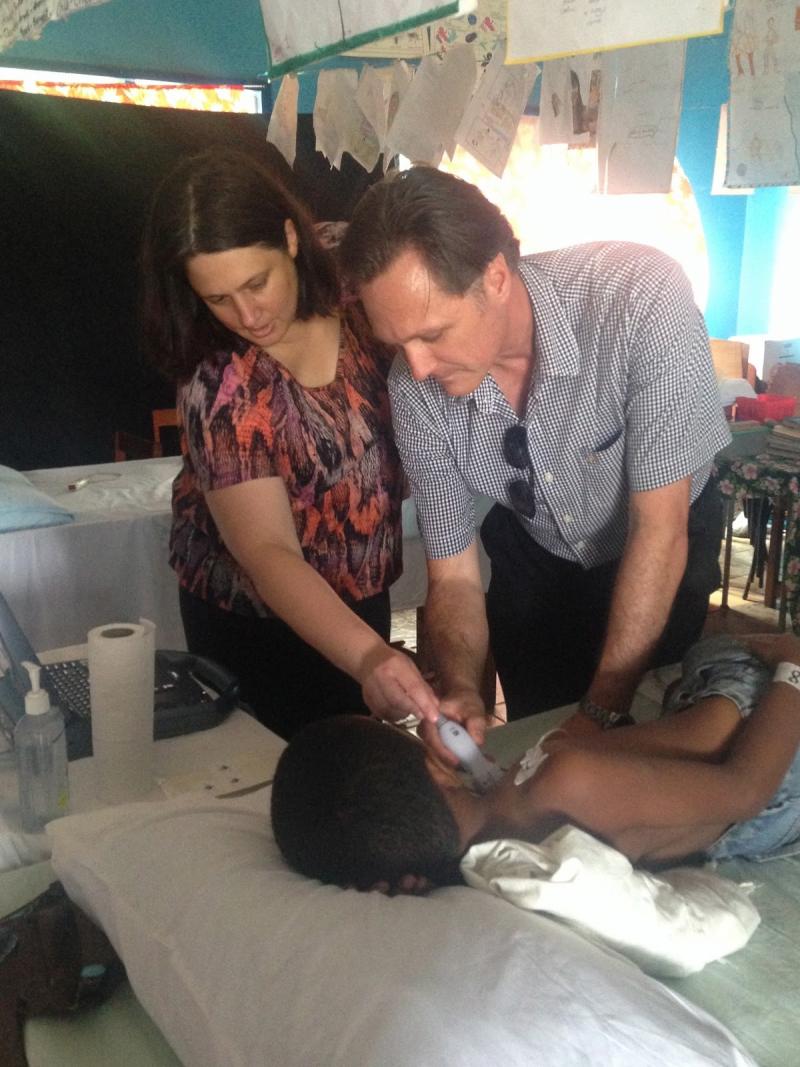
Rheumatic heart disease
Diagnosis
Diagnosis of RHD is classically based on clinical history and examination. Echocardiographic findings of rheumatic heart valve damage can confirm the diagnosis. ECG and chest x-ray changes may provide supportive evidence in settings where echocardiography is unavailable.
Interactive Australian modules on the diagnosis and management of RHD are available online.
Management
In addition to secondary prophylaxis, medical management of the consequences of RHD is often needed. The first presentation of RHD is generally heart failure. In an Australian population 27% of people developed heart failure within 5 years of RHD diagnosis. In many settings, RHD patients present even later in the course of their disease - 46% of first presentations were in class NYHA III/IV heart failure in Uganda,344,18% in Soweto, South Africa.163 Medical management of RHD involves using medications to control symptoms, improve outcomes and reduce complications.
Detailed guidelines for the medical and surgical management of valvular heart disease have been developed in Europe and in the United States of America. However, resources to deliver cardiac investigations, therapy and surgery are limited in countries with the greatest burden of RHD. Guidelines from high resource settings where RHD is relatively rare do not necessarily account for clinical and technical complexities in resource limited settings.
United States of America
- 2014 AHA/ACC Guideline for the Management of Patients With Valvular Heart Disease, A Report of the American College of Cardiology/American Heart Association Task Force on Practice Guidelines
- 2014 AHA/ACC/HRS Guideline for the Management of Patients with Atrial Fibrillation: Executive Summary. A Report of the American College of Cardiology/American Heart Association Task Force on Practice Guidelines and the Heart Rhythm Society
- Infective Endocarditis (Guidelines on Prevention, Diagnosis and Treatment of). ESC Clinical Practice Guidelines.
Europe
- Guidelines on the management of valvular heart disease (version 2012), written by the Joint Task Force on the Management of Valvular Heart Disease of the European Society of Cardiology and the European Association for Cardio-Thoracic Surgery.
- Infective Endocarditis (Guidelines on Prevention, Diagnosis and Treatment of). ESC Clinical Practice Guidelines.
Canada
- Surgical Management of Valvular Heart Disease 2004, Canadian Cardiovascular Society Consensus Conference
Specific challenges in medical and surgical care for RHD are addressed in publications listed below and reflected in following guidelines.
Australia
- Guidelines on rheumatic fever: identification, management and secondary prevention can be downloaded in full or in a summary guide.
- A PowerPoint of surgical management of RHD in the Australian context provides a summary of some content
India
- Consensus Guidelines on Pediatric Acute Rheumatic Fever and Rheumatic Heart Disease were developed in 2008 by the Working Group on Pediatric Acute Rheumatic Fever and Cardiology Chapter of the Indian Academy of Pediatrics.
New Zealand
- New Zealand guidelines for rheumatic fever. Diagnosis, management and secondary prevention of acute rheumatic fever and rheumatic heart disease: 2014 update by the New Zealand Heart Foundation and the Cardiac Society of Australia and New Zealand. A New Zealand article, Priorities in cardiac surgery for rheumatic heart disease provides additional detail about surgical service experiences.
An interactive Australian module on the medical management of mitral valve disease is available online.
Information on different models of providing tertiary care, access to surgery, capacity building and health systems strengthening can be found in the control section of this site.





